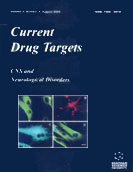Abstract
In the last decade, the G-Protein-Coupled Receptor (GPCR) superfamily has emerged as a very promising and enriched source of therapeutic targets for the treatment of obesity. GPCRs represent the largest family of mammalian proteins, with approximately 1000 members. It is estimated that the GPCR family may comprise greater than 1% of the human genome and is the molecular target for approximately 30% of currently marketed drugs. Human GPCRs are modulated by a large variety of ligands, including peptides, lipids, neurotransmitters, nucleotides, ions and external sensory signals such as pheromones, tastes or odors. Many of the above ligands have been implicated in the physiological control of energy balance. This article will examine the biological rationale, assets, identified liabilities and current drug development status of these receptors as anti-obesity drug targets.
Keywords: G-Protein, Human GPCRs, neurotransmitters
 4
4

















